Don’t Overlook The Details: The Mundane Mistakes That Derail Pre-War Renovations In NYC
In New York City renovations—especially in pre-war buildings—the smallest details often have the biggest impact on whether a home feels complete or unfinished.
September 4, 2025
|
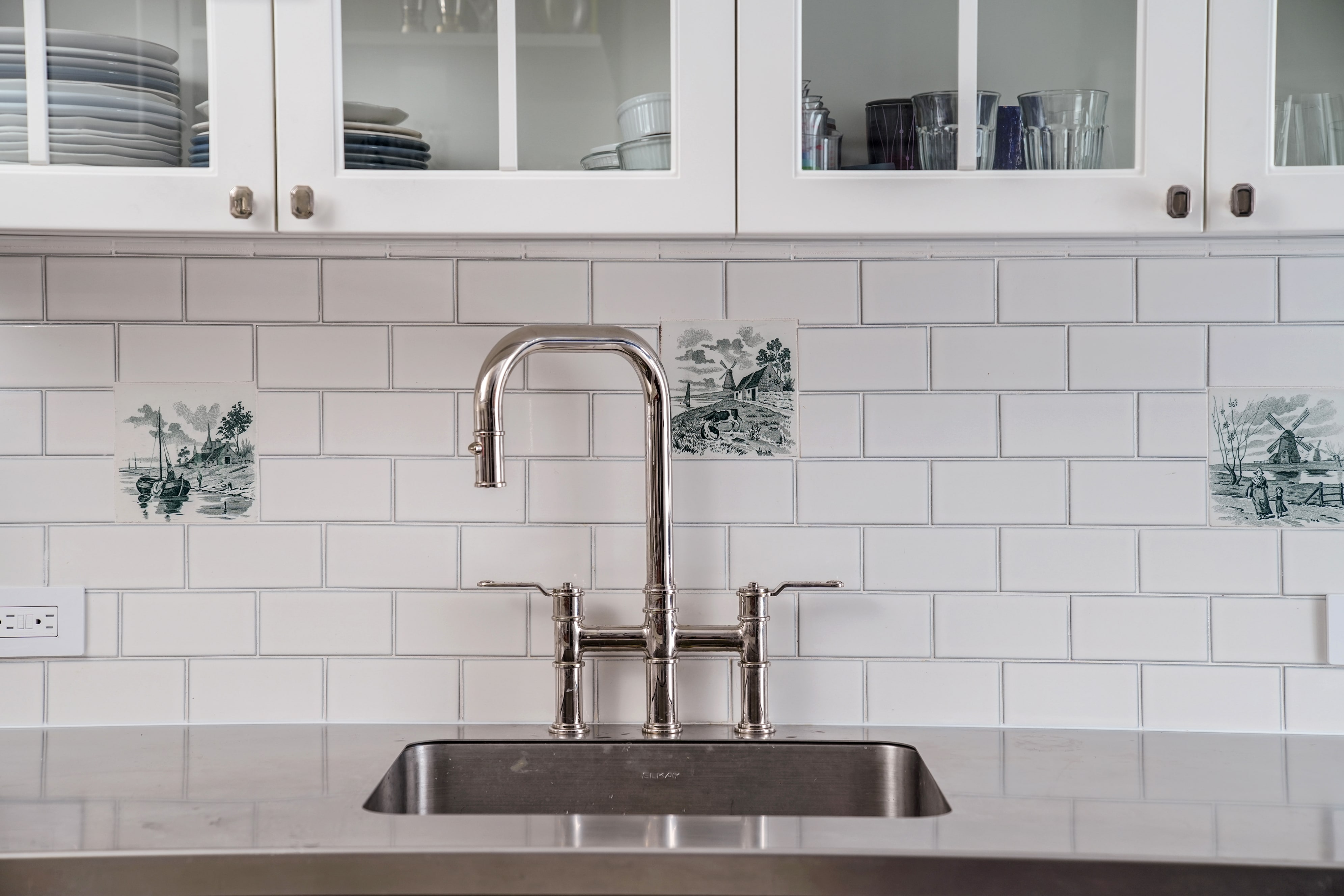
Don’t Overlook The Details: The Mundane Mistakes That Derail Pre-War Renovations In NYC
It’s not the bold mistakes that sink NYC pre-war renovations—but background details no one talks about until it’s too late.
TABLE OF CONTENTS
- The Subtle Design Elements That Derail Renovations
- Why The “In-Between” Details Matter
- Design Cohesion Without Going Full Gut?
- The Case For A Full-Service, Design-Build Approach
- True Cohesion Starts Behind the Scenes
When homeowners set out to renovate an apartment in New York City—especially in a pre-war building—the focus almost always starts with the big-ticket items: kitchens, bathrooms, and maybe the floors. Makes sense. These are the most heavily used spaces, the ones that show their age fastest, and where updates deliver the most dramatic before-and-after impact.
But while these upgrades deserve priority, too many renovations suffer from a common blind spot: overlooking the more mundane architectural details that hold a home together. We're talking about original doors that stick or don’t latch, worn hardware, uneven walls, mismatched casings, overpainted crown moldings—elements that are often dismissed as background noise during early planning - only to stand out in stark contrast once the high-impact areas are complete.
At Gallery KBNY, we specialize in helping clients plan and execute full-scope pre-war renovations, whether a true gut renovation or more selective overhaul. In either case, one truth remains: the success of a truly cohesive renovation hinges on the little things.

The Subtle Design Elements That Derail Renovations
In many pre-war apartments—especially those in estate condition—a full gut renovation can be relatively straightforward. Everything is being replaced, and the planning process becomes a matter of smart layout, efficient design, and managing external variables like asbestos abatement, building management approvals, and electrical capacity upgrades.
But when clients opt for a partial renovation—whether to save costs or preserve certain original charm—things get complicated. Surgical precision is required to strike the right balance between old and new, and that’s where costly mistakes often sneak in.
Doors that no longer close properly. Brass knobs that clash with updated finishes. Casings that don’t align with new floor heights. These may sound like minor quirks, but they can create major friction once the renovation is underway or completed.
.jpeg)
Why The “In-Between” Details Matter
Original architectural details in pre-war apartments weren’t chosen randomly—they were designed to work together, in both proportion and material. When you update only parts of a home and leave these features untouched, the sudden contrast can become jarring.
Consider this common scenario: a client updates the kitchen and bathroom but decides to leave original interior doors in place. Once the renovation is complete, those doors—perhaps painted dozens of times over the decades—suddenly feel flimsy. A mortised lock no longer functions properly. Modern hardware doesn’t align with the existing bores or weight tolerances. What seemed like a smart place to cut costs quickly snowballs into scope creep: replacing the doors leads to replacing the casings, which leads to wall patching and repainting—turning a minor detail into a major (and expensive) change order.
We often hear versions of the same regret:
"Now that everything else looks updated, I wish I had done the doors too."
Unfortunately, by that point, the trades have moved on, pricing may have changed, and access to certain areas is restricted by installed cabinetry or finished floors. A small decision delayed becomes a big opportunity missed. Enter, anxiety.
-min.jpeg)
Design Cohesion Without Going Full Gut?
Thankfully, there’s good news. It is possible to achieve cohesive interior design without gutting your entire pre-war home—but only if the planning is intentional from the beginning. If your doors, trim, and moldings are in excellent shape and consistent throughout, they may be worth preserving. But in many NYC homes, especially pre-wars, these elements endured decades of patch jobs, paint layers, or mismatched repairs.
This is why our all-inclusive design-build firm places so much emphasis on early scoping. Our prep doesn’t just include budgeting for the big stuff—but deciding which architectural elements to preserve and which to upgrade. That evaluation shapes both the renovation’s aesthetic integrity and the long-term value of your property. When done right, truly thorough planning means your home feels thoughtful and resolved, opposed to a collection of unrelated updates.
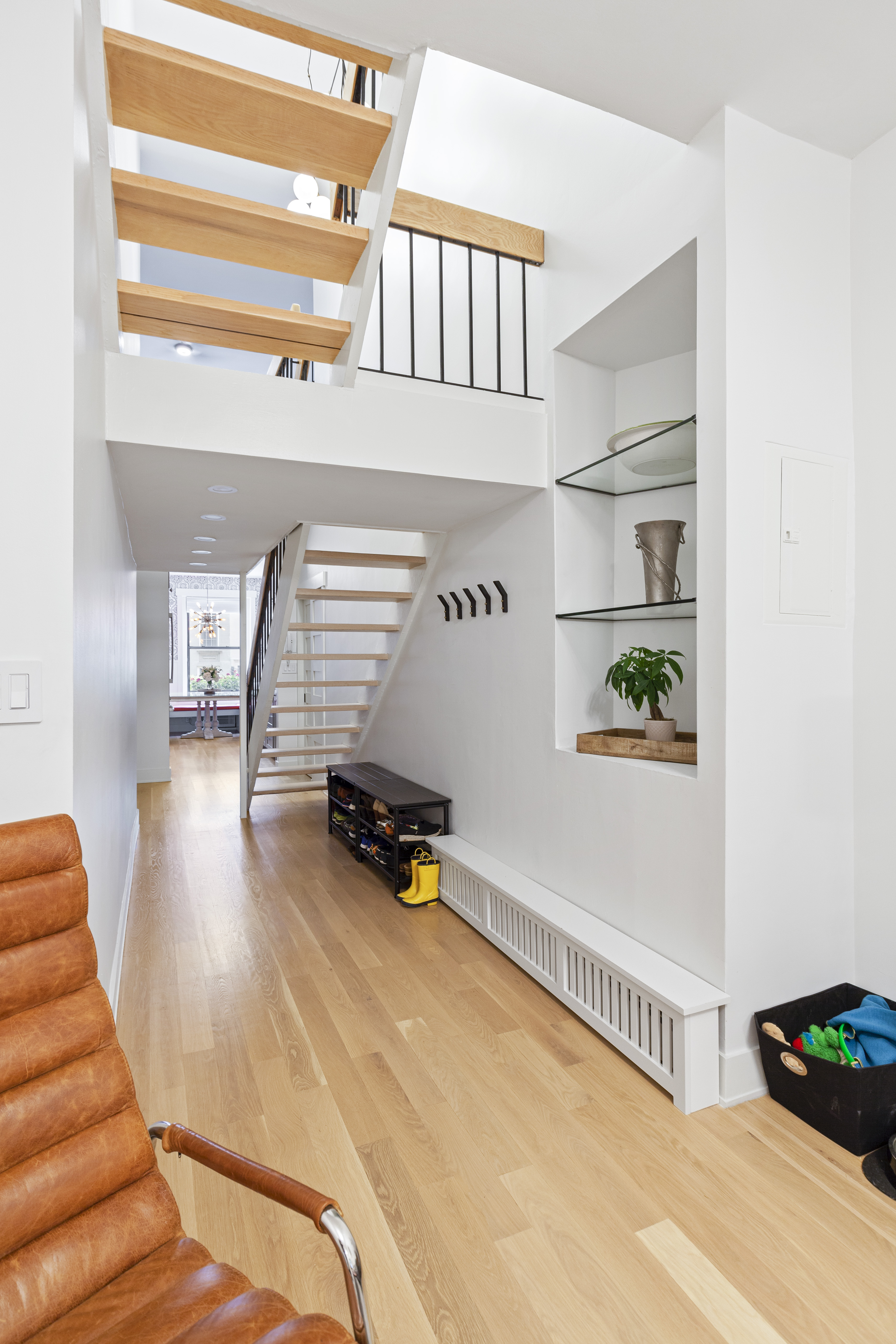
The Case For A Full-Service, Design-Build Approach
At Gallery, we’ve built our design-build process specifically to avoid these pre-war pitfalls. From the outset, we help clients consider every element—visible and not-so-visible—so nothing gets overlooked or becomes a costly afterthought.
Because everything happens in-house—interior design, architecture, permitting + board approvals, and construction management, we can coordinate across teams to make sure the small details align with the big picture. Our goal? Renovations that are not only pristine, but cohesive, functional, and built to last.
Whether our clients have already signed on with us or are still navigating the early stages of property purchase, our speciality is helping homeowners plan with clarity. View a few client testimonials below:
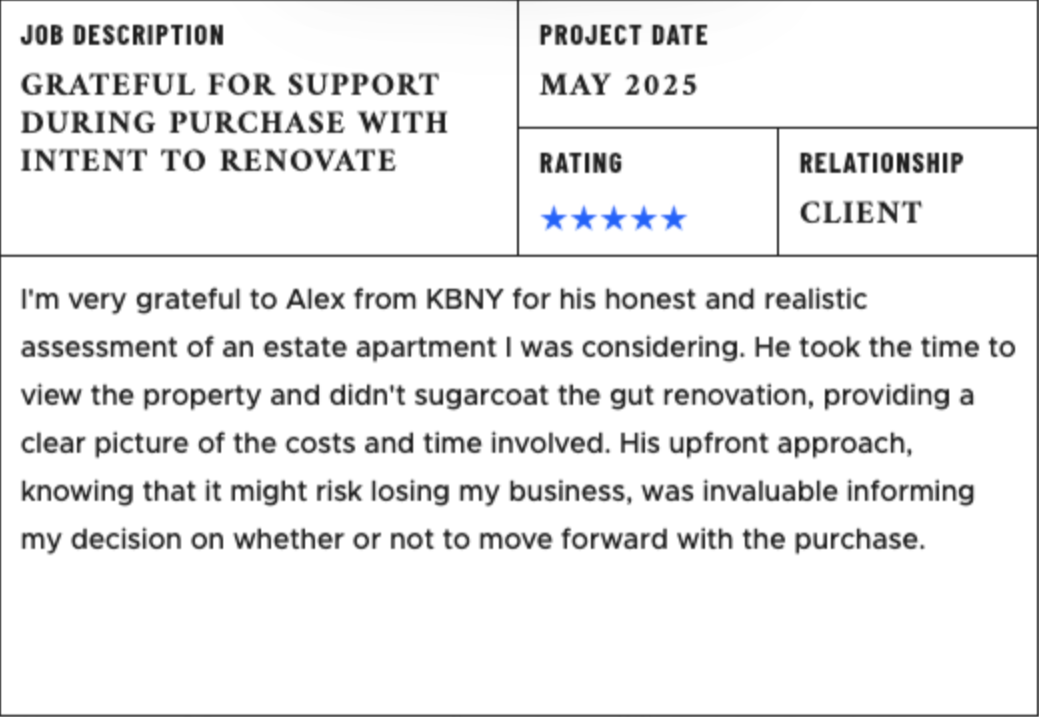
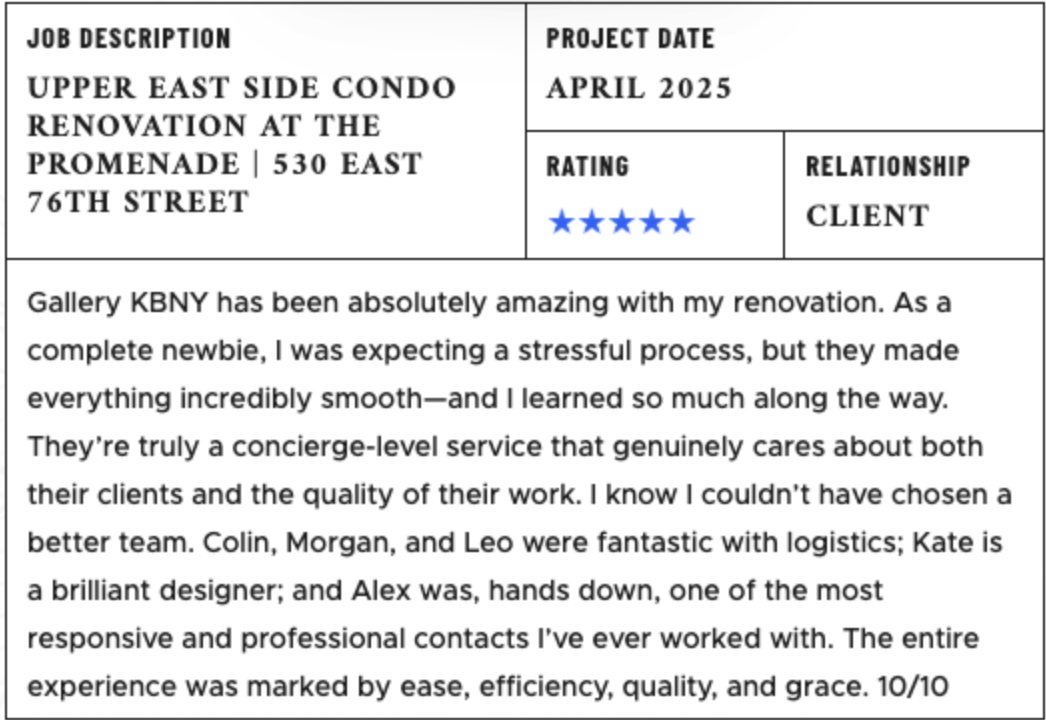
True Cohesion Starts Behind the Scenes
Baseboards, doorframes, moldings, picture rails are more than decorative details. They’re the connective tissue of a home’s architecture. In NYC, especially in pre-war apartments, these in-between elements carry real weight. Overlook them, and they disrupt the flow of an otherwise beautiful renovation. Approach them with care, and they elevate everything around them.
At Gallery, we help clients think beyond the kitchens and baths. Because more often than not, unassuming details like misaligned casings, overpainted doors, inconsistent trim are what make or break design cohesion. Planning for them early not only preserves aesthetic integrity but also helps avoid costly regrets later and ensures the final result feels complete, not patch-worked.
Considering a pre-war apartment renovation in New York City that may - or may not - require a gut renovation? View our portfolio of NYC apartment renovation before and afters, learn more about Gallery, or contact us today.

.png)
.png)


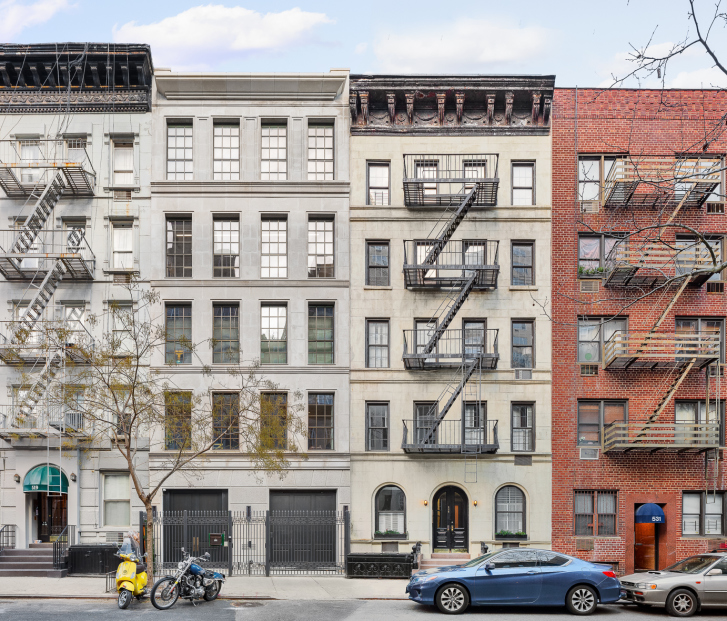


.jpg)

%20(2).jpg)


.jpg)
%20Gallery%20KBNY.JPG)


